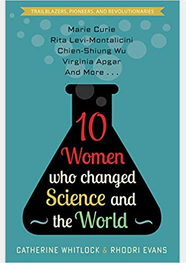Silent Spring: Why Rachel Carson’s words still ring true today

Rachel Carson was one of the early pioneers of environmental science. She fought against the tide of establishment repression, and her own ill health, to get her meticulously-conducted research across. As a woman in science, she was viewed as an outsider but she made her voice heard through her writing: highly readable and approachable accounts of scientific facts. Man was damaging the environment, and our climate, and action was needed. But the alarm bells she activated are often ignored, nearly sixty years later.
Women have always been involved in science. Across biology, chemistry, physics and medicine, countless unacknowledged women have participated in scientific endeavours. But, struggling against oppression, their voices have rarely been heard. Rachel Carson is one of the few exceptions. That’s mainly due to the importance of her message, the way she got it across and the battles that ensued.
Rachel Carson was immersed in nature from an early age. Inspired by her mother and their regular nature expeditions, she crafted her observations into beautiful written stories. Although she initially majored in English at University, her love of Biology, combined with her early prowess as a writer, meant she was perfectly placed for her lifetime work.
Rachel’s rural upbringing also meant she witnessed the effects of humans on the environment. Several family members worked in the nearby Pittsburgh industrial power plants,with their towering chimneys which spewed out toxic chemicals into the atmosphere. One particular toxic chemical would propel Rachel into the limelight.
After the success of a trilogy of books about the marine environment, she wrote Silent Spring. Using rigorous scientific assessment, Rachel explained how pesticides like DDT entered the food chain and damaged a whole host of creatures beyond the intended target. Silent Spring kick-started the environment movement and began a roller coaster ride, as Rachel adjusted to fame and was diagnosed with terminal cancer.
Rachel met resistance at every turn. Silent Spring was hard hitting and attacked commercial companies, condemning them for sacrificing the health of the environment in order to generate more profit. She criticized many scientists who were researching insecticides because chemical companies were pouring money into universities. Big business was under Rachel’s forensic gaze.
Whilst the politicians were initially equally skeptical about Rachel’s findings, the tide started to turn. In 1962, the year Silent Spring was published, President John F Kennedy cited the book and appointed a committee to study pesticide use. Over the next two years, the government increasingly called for heightened vigilance and gradual reductions in the use of environmentally-unfriendly pesticides.
Sadly Rachel didn’t live to see the effects of Silent Spring. She died in 1964, at the age of 56. In 1972, DDT was banned in the USA, although it is still in use in some countries. The Clean Water Act was passed in 1972 and the Endangered Species Act in 1973.
Rachel’s message didn’t just influence the government or public: it also influenced the business community. As Rachel’s message of environmental and climate protection began to percolate, the executives at Exxon, the world’s largest oil company, wrote a memo. Distributed internally to a select group in 1982, it spelled out that maintaining a stable climate would require “major reductions in fossil fuel combustion”, otherwise, “there are some potentially catastrophic effects that must be considered. Once the effects are noticeable, they may not be reversible.”
Today, Rachel Carson’s message is as important as ever. President Donald Trump has alleged climate scientists have a political agenda. Rachel faced similar accusations, as critics suggested Silent Spring was part of a left-wing conspiracy to bring down capitalism.In 2017, Trump pulled the US out of the landmark 2015 Paris climate agreement, claiming the international deal to keep global temperatures below 2 degrees Celsius was disadvantageous to US industry and its workforce. Trump continues to ignore warnings from his own government agencies, dismissing a 2018 report of the devastating economic consequences from climate change. Any future US president would do well to heed the likes of Rachel Carson and her successors and invest in clean energy policies, protect the environment, and promote biodiversity.
Rachel’s legacy also lives on as other women are prominent advocates for combatting climate change. The teenage activist Greta Thunberg is a lucid and unremitting climate campaigner. Speaking at the World Economic Forum in Davos earlier this year, she told attendees. “I don’t want you to be hopeful, I want you to panic. I want you to feel the fear I feel every day. And then I want you to act. I want you to act as if our house is on fire. Because it is.”
Rachel Carson was certainly fearful. She saw the smoke of the factories in her childhood and the sight never left her. Without the immediate and far-reaching power of the internet, she used writing as her tool. Rachel knew how to construct a story and this story won’thave a happy ending, unless we act.
Like Greta’s, Rachel’s message was unsettling. Cutting edge science often is. Building hope for the future is part of the equation but that has to be balanced with an understanding of the impact of our actions on our planet and humankind. The stories of the other biologists, chemists, physicists, and doctors featured in Ten Women Who Changed Science and the World, reveal that they too understood the power of science to change lives.
